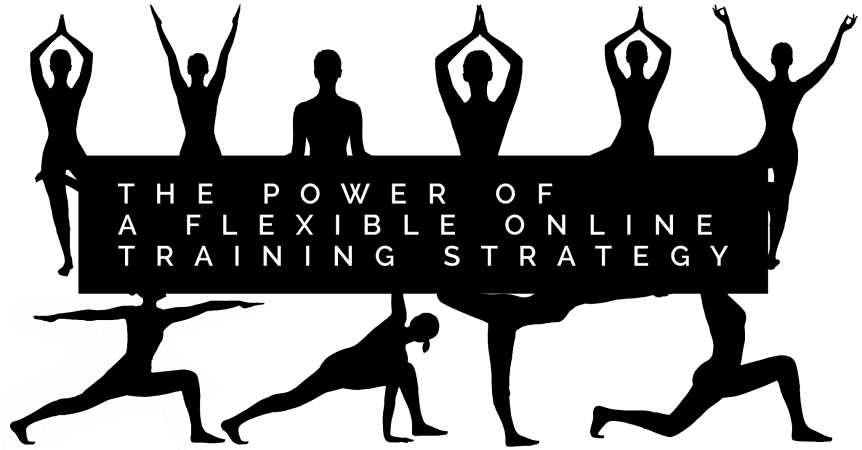The Power of a Flexible Online Training Strategy
Employees respond to training in a more positive way when courses are relevant to their immediate needs, easy to access, and fast to complete. How can you do this, though? After all, each of your employees will have different needs, they will access training in different ways, and they will progress through it at different speeds.
You need a flexible online training strategy which has two essential elements:
- E-learning course delivery
- A strategy that embraces flexible learning
When you do this, your employees will have a more fulfilling professional development experience, plus your business will benefit from their increased knowledge and additional skills. This is because employees will become more actively involved in their own training.
This is a much more efficient approach to training than a rigid structure where you create a course and then instruct your employees to complete it, whether that is in-classroom or via e-learning.
What Does a Flexible Online Training Strategy Look Like?
- Range of different course content – your employees should have access to a bank of content covering a range of topics related to their jobs, your business, and your industry in general
- The content should be online – making the content available to your employees online means they will have access to it when they need it
- Courses should work on all devices – each course you develop should work and look attractive whatever type of device the learner uses, including smartphones
How to Develop a Flexible Online Training Strategy
Here are five additional tips to help you make a flexible online training strategy work in your business:
- Set goals
- Embrace the on-demand culture
- Use personalised learning
- Include microlearning courses and modules
- Offer guidance and support
Let’s look at each of these in more detail.
Set Goals
A key part of creating a flexible online training strategy in your business is empowering the learner and letting them make decisions on their own training (more on this in the points below). This only works, however, when you set standards and goals for learners to achieve.
One approach is to decide on a set of core competencies that your employees must achieve, plus a set of advanced competencies that are optional. The learner can decide how to achieve these competencies, with you basing part of your assessment of their performance on whether or not they achieve the competencies.
Use Personalised Learning
Personalised learning is a crucial part of having a flexible online training strategy. It involves giving the learner control over their own learning. This can mean letting the learner choose which modules to take and in which order, or letting the learner choose the method of learning, i.e. watch a video or read a document.
An example could be a learner who is already familiar with the content in some of the modules of a particular course. Letting this learner personalise their learner experience means giving them the flexibility to choose to skip those modules.
Embrace the On-Demand Culture
Your courses should be available to your employees when they need them and in a format they can immediately use. This facilitates personalised learning as well as other learning techniques, such as just-in-time learning.
Just-in-time learning involves making courses available to learners when they need them.
Include Microlearning Courses and Modules
One of the above points talks about making your online training courses available on demand and facilitating just-in-time learning Microlearning techniques can help you achieve this. Microlearning also makes it easier to implement a personalised training strategy where employees decide on their own training paths.
Microlearning involves breaking courses and modules into bite-size chunks. In fact, microlearning courses and modules should take just minutes to complete.
Offer Guidance and Support
Making your online training strategy flexible and empowering the learner does not mean leaving them to completely look after themselves. You must also provide significant levels of support for the learner to help them progress.
This includes peer support using tools like social media. You should also offer instructor support by encouraging learners to reach out if they are experiencing difficulties with any of the course content or their progress in general.
Both the above are methods of support that involve the learner reaching out – either to an instructor or to their peers. You can also offer support where you reach out to the learner. One example is through assessments. After a learner completes a module or course and does the assessment, you can use these results to suggest suitable pathways for the learner to follow next.
What You Should Do Next
As you can see, the above is very different to traditional and more rigid training approaches that often involve identifying a training need, developing a course, and putting everyone through it. While adding flexibility to your strategy will take additional time and expertise, you will achieve considerably better results.
